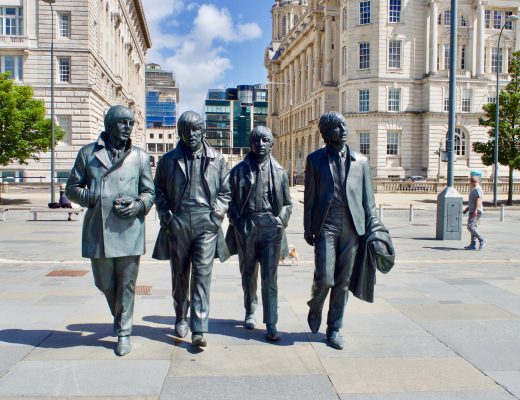About a month before the lockdown began, I had the pleasure of going along on one of UCL Battlefields Tours. In 2013 the UCL Institute of Education was selected to develop and deliver the government’s First World War Centenary Battlefield Tours Programme. Since then they have worked with over 2000 different secondary schools within the UK and taken more than 8,500 teachers and students to Belgium and France.
The programme itself is amazing. It’s a state funded trip (accommodation, travel, entrance fees, meals) to tour the most important sites of WWI. It gives so many students access to history in a way that most might not be able to afford or have the opportunity to visit.
After boarding the coach very early in York, we drove down south to pick up the UCL crew, before continuing on the Channel Crossing. It was dinnertime by the time we got to Belgium and our stay at the Peace Village, so the first day was spent traveling and settling in.
We then woke bright and early to discover Flanders Fields. I don’t know if you remember the horrific storms that lashed Europe and the UK in the middle of February but we were out there in them. We could easily picture how men ended up knee-deep in mud whilst we stood there, awed by the sheer terror and ferocity of the sites history.
Flanders Fields is the area also known as the Ypres Salient, aka the Western Front in WWI. Some of the most famous battles from the area are the Second Battle of Ypres and the Battle of Passchendaele. I had the words of some of the most famous Western writers ringing in my head, being there as an English teacher, and a history buff to boot. “I died in hell, they called it Passchendaele’. (Siegfried Sassoon, Memorial Tablet).
In history classes, we hear the casualty numbers and they are just that – numbers. It was only standing in the cemeteries and battlefields that the casualty numbers started to ring true with any real conviction. Some historians believe that the death toll at the Battle of Passchendaele was 600,000. And that’s only one battle over many years.
We visited Tyne Cot Commonwealth War Graves Cemetery and Memorial to the Missing which is the largest Commonwealth cemetery in the world. It’s just outside of Passchendaele. There are around 12,000 men buried in Tyne Cot, the vast majority of whom are still unidentified.
It was a emotionally draining day. I certainly wouldn’t be the first person that wept whilst taking in the staggering tragedy of Tyne Cot, and I certainly won’t be the last. I find writing about the sheer grief that hits you when you realise what a horrific, dirty, senseless death all these people suffered almost impossible to grapple with.
Ypres itself is a fairly quiet little town, that seems to mostly exist on Battlefields tourism. It was almost entirely destroyed during WWI, so very little of the original town remains. The Flanders Fields Museum within the town is well-worth a visit. The horror of war is still palpable in the town, and it’s history is especially dark as it is one of the first places where chemical warfare was deplored, which is one of the reasons it maintains a close relationship with another ravaged city – Hiroshima.
The most famous sight in Ypres is the looming presence of the Menin Gate. The Menin Gate Memorial to the Missing is a massive war memorial dedicated to the British and Commonwealth soldiers who were killed on the Ypres Salient whose graves are still unknown. There are 54,896 names on the memorial. One tiny ray of light is that occasionally you can spy a blank space between the names; that means the name that was there has been patched over, so the remains of that missing soldier have since been found. To this day remains from both WWI and WWII are frequently found in the area. At one point in time, the coach that we were one had to be diverted to a different road because a road maintenance crew had found the remains of two German soldiers.
The Late Post ceremony at Menin Gate has occurred at 8pm since the memorial opened in 1927. Buglers from the Last Post Association march under the arch and sound the ‘Last Post’, maintain a moment of silence and reflection and allow individuals and groups to lay wreaths. This ceremony has occurred every night since 1927 except during the German occupation of Ypres during WWII. The ceremony was so haunting and I left feeling incredibly moved. As the last generation to possibly know a WWI veteran, I found myself wondering how long this ceremony will continue, now that the war and the fallen are no longer in living memory.
I’ll continue on with my Battlefields Tour stops and visits on another post, picking up at the Somme.
Have you visited any WWI memorials or Battlefields? Did you find them emotionally draining or did you feel removed from the horror of it?
If you were interested in this post, you might also like:
DDR Museum (Berlin, Germany)
East Side Art Gallery (Berlin, Germany)
Berlin
Bratislava City Museum (Slovakia)
Bazylika Mariacka (Gdansk, Poland)
The Spanish Synagogue (Prague, Czech Republic)
Hastings Castle (UK)
Battle (UK)
Battle Abbey (UK)
Pin it for later:
































